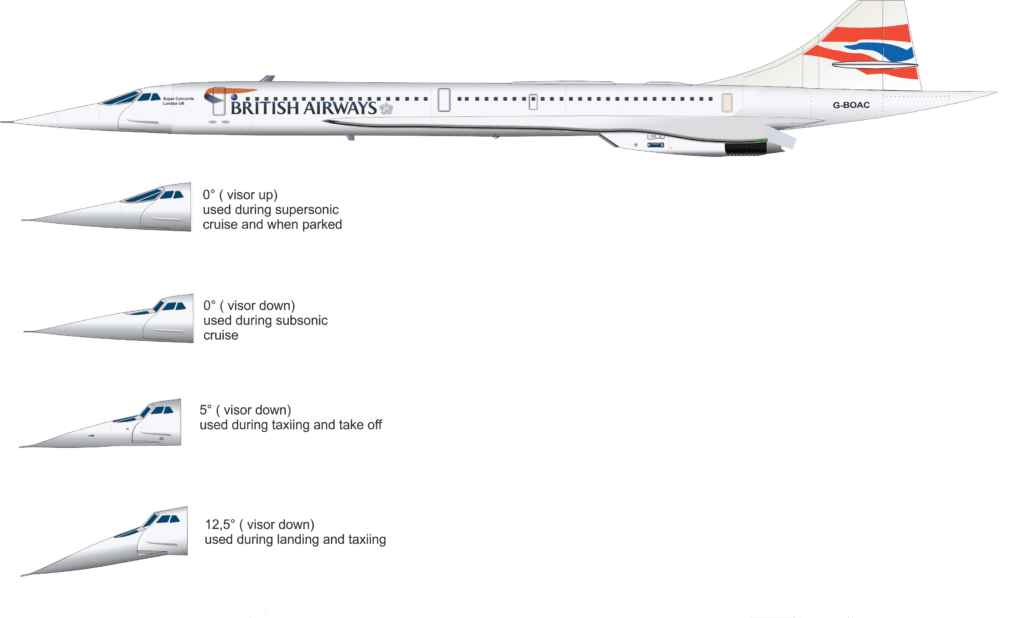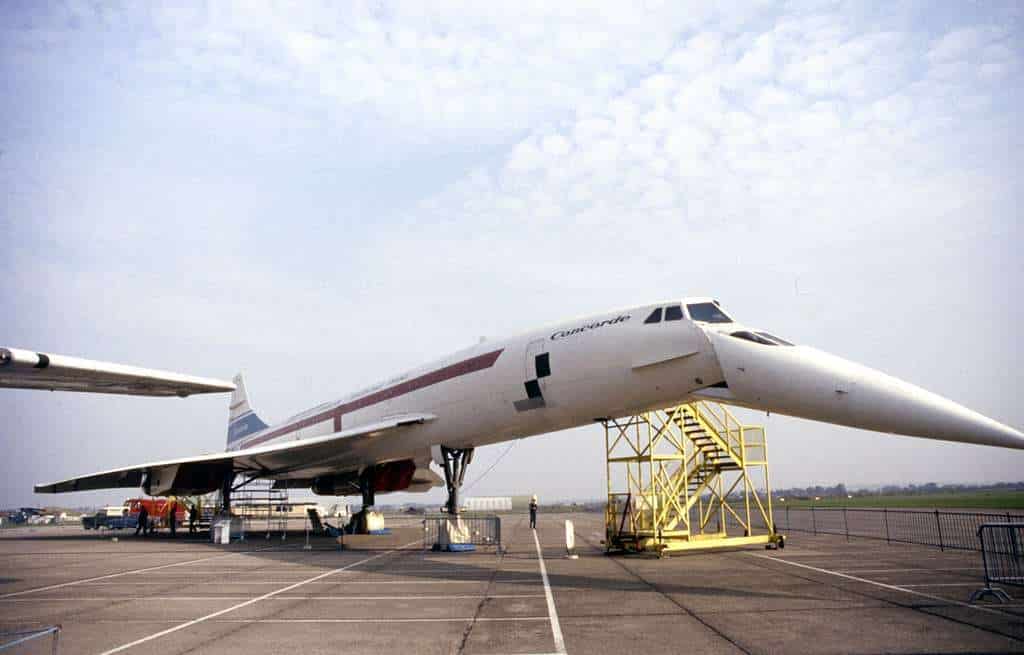The Concorde, a supersonic airliner that revolutionized air travel, was renowned for its sleek design and groundbreaking technology. Among its many distinctive features, the Concorde’s drooping nose stands out as an ingenious solution to a critical aerodynamic and visibility challenge.
The Need for Enhanced Visibility
At supersonic speeds, the Concorde’s elongated, pointed nose was essential for reducing drag and optimizing aerodynamic efficiency.
However, this streamlined shape also posed a significant problem for pilots during takeoff, landing, and taxiing operations. The obstructed forward view made it difficult to maneuver the aircraft safely on the ground and in the air.
To address this issue, the Concorde’s designers came up with an innovative solution: a drooping nose.
This feature enabled the pilots to lower the front cone of the aircraft by 12.5 degrees (pictured below), providing them with an unobstructed view of the runway and surroundings.

The Drooping Nose Mechanism
The Concorde’s drooping nose mechanism was remarkably complex yet elegant. It consisted of a series of hydraulic actuators that controlled the movement of the nose section. The pilots could adjust the nose position using a lever in the cockpit.
Both the nose and visor mechanism are hydraulically controlled from the aircraft’s number 3 green hydraulic system, and its movement is controlled from a four-position locking lever in the cockpit, next to the first officer’s panel.
Complementing the nose mechanism was a transparent visor, made of special heat resistant tinted glass, that covered the nose window.
When not in use, the visor retracted into the nose, maintaining the Concorde’s streamlined shape for optimal aerodynamic efficiency during supersonic flight.

Three Nose Positions for Optimal Visibility
The drooping nose mechanism allowed for three distinct positions:
Visor Down, Nose Up: This position was used for pushback from the gate, ensuring clearance during maneuvering.
Visor Down, Nose Intermediate (5 Degrees): This position was used for taxiing, takeoff, and initial climb or approach. The 5-degree downward angle provided adequate visibility for these critical phases of flight.
It was normal practice to perform a take-off with the visor/nose down intermediate at 5 degrees; however the aircraft can, and did, made take-offs with them both ‘up’ quite satisfactorily.
Visor Down, Nose Down (12.5 Degrees): This position was used for final approach and landing. The maximum 12.5-degree droop angle ensured clear visibility for precise maneuvers during landing procedures.
Supersonic flight was conducted with the Visor Up, Nose Up configuration (pictured below).
In the event of a total hydraulic failure or an electrical failure, the nose uplocks could be released mechanically, allowing a nose to free-fall to the 5 degree down position.

Engineering Ingenuity
The Concorde’s drooping nose was a testament to the ingenuity of its designers. It effectively addressed the conflicting demands of aerodynamic efficiency and visibility, enabling the aircraft to operate safely and effectively throughout its entire flight envelope.
Today, the Concorde stands as a symbol of technological innovation and human achievement. Its drooping nose remains a remarkable example of how engineering creativity can overcome challenges and lead to further advancements in aviation.
The Concorde’s drooping nose stood out as a distinctive feature, but it was an essential component of the aircraft’s design, ensuring both aerodynamic efficiency and pilot visibility.
This innovative solution highlights the ingenuity of the engineers who created the Concorde, which remains a true marvel of modern aviation.
You can review other articles in the AviationSource special series here.

Click the banner to subscribe to our weekly newsleter.









